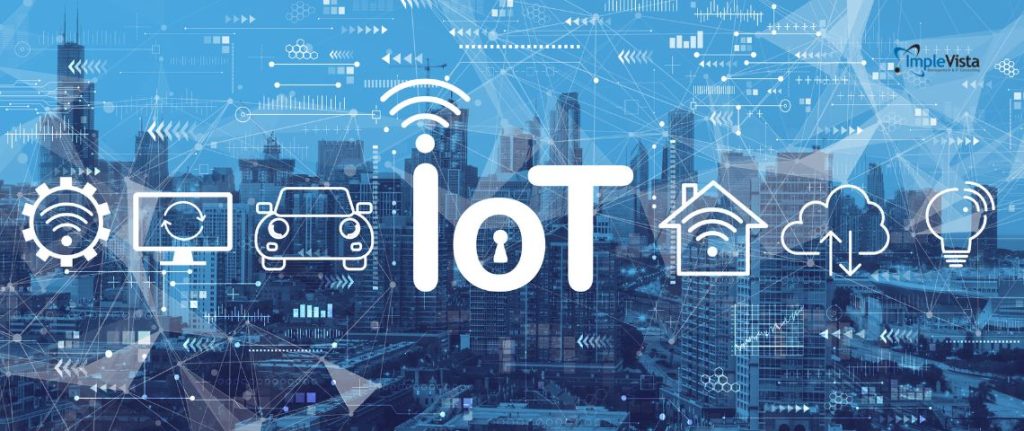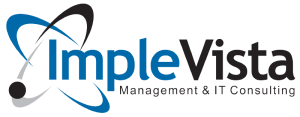As cyber threats grow more advanced, strengthening IT security has become a critical priority. With digital transformation accelerating in Bangladesh and across the globe, organizations need stronger protection for systems and data. Blockchain technology offers a compelling answer. Its decentralized, cryptographic structure is designed to prevent tampering, ensure transparency, and reduce single points of failure. This article explains how blockchain enhances IT security through immutability, decentralization, and encryption, along with practical use cases and implementation guidance. You’ll also learn how Implevista’s expertise in blockchain and security can support your organization.
Blockchain functions as a distributed ledger, where each block of data is cryptographically linked to the previous one. Once written, records cannot be altered without modifying every subsequent block, making manipulation nearly impossible. Consensus mechanisms like Proof of Work or Proof of Stake validate new entries, and network nodes verify transactions independently. Even if one node is compromised, the rest preserve the chain’s integrity. In short, blockchain’s core principles—decentralization, cryptography, consensus, and immutability—directly translate into stronger IT security.
Key Advantages of Blockchain Technology for IT Security
Blockchain brings several inherent advantages that directly improve IT security. Unlike traditional centralized systems, blockchain’s distributed architecture eliminates single points of failure. Because the ledger is shared across many nodes, attackers cannot compromise the system by breaching a single server. Even if one node is hacked, the correct data on other nodes preserves the network’s integrity.
- Tamper-Proof Data (Immutability): Every transaction is time-stamped and cryptographically linked in a chain. Once a block is added, it cannot be altered without changing all later blocks. This makes blockchain an ideal anti-tampering solution – fraud or unauthorized edits simply become impractical.
- Built-in Cryptography: Blockchain uses advanced encryption (public/private key pairs and hashing) by default. Only authorized parties with the proper keys can create or verify transactions. This ensures data confidentiality and authenticity across the network.
- Consensus Validation: Before any data is finalized, it must be approved by the network through consensus (e.g. voting or solving cryptographic puzzles). This consensus mechanism prevents bogus or malicious transactions from being added, greatly reducing the risk of unauthorized changes.
- Transparent Audit Trails: All transactions on a blockchain are visible (to permitted participants) and permanently recorded. This creates a full audit trail: every data change is traceable to its origin. For compliance and forensic purposes, this transparency is invaluable. (Yet sophisticated cryptography still lets users protect sensitive details.)
- Decentralized Authentication: With blockchain-based identity management, users control their own digital IDs, reducing centralized credential theft. Authentication and access can be enforced on-chain, making impersonation much harder.
- Automated Security via Smart Contracts: Self-executing contracts on blockchain automatically enforce security policies and procedures when conditions are met. This reduces human error (insider threats, misconfiguration) and ensures that critical actions are carried out reliably under predefined rules.

How Blockchain Enhances Cybersecurity in Practice
Beyond the core features, blockchain can be applied to specific security use cases:
- Identity and Access Management: Traditional identity systems use central databases that can be breached. Blockchain lets users own decentralized digital identities, sharing only necessary info. This reduces identity theft and grants individuals control over who can verify their credentials. For instance, employees’ login identities can be stored on a blockchain so that a compromised password on one server doesn’t expose the entire company.
- Data Integrity and Protection: By anchoring critical data (financial records, medical files, logs) onto a blockchain, organizations can ensure it’s never secretly altered. Any change attempt would be instantly visible in the chain. Blockchain can also certify the authenticity of files: for example, in supply chains or legal evidence, records on the blockchain prove the data hasn’t been tampered with.
- Secure IoT and Edge Devices: The Internet of Things adds billions of devices, many with weak security. Blockchain can secure IoT by giving each device a cryptographic ID on the blockchain. Only registered devices can join the network. Also, all device data logged on a blockchain is immutable, preventing spoofing or data tampering in critical fields like healthcare. For instance, sensors in a factory or patient monitors in hospitals can write encrypted data onto a blockchain ledger, ensuring safety and reliability.
- DDoS and Network Security: Conventional DNS systems are centralized and vulnerable to attacks. Blockchain-based DNS distributes domain records across many nodes, so an attacker must simultaneously hit many targets to cause disruption. Similarly, a decentralized network makes DDoS attacks far harder because there’s no single point to overwhelm. Research shows that using blockchain for DNS can dramatically reduce the impact of large-scale attacks.
- Secure Transactions & Communications: Whether transferring money or sensitive messages, blockchain can secure transactions end-to-end. Cryptographic transactions on the blockchain mean you always know the exact history of a transfer (a key point noted by NIST for manufacturing data). In finance and supply chains, blockchain prevents fraud by ensuring transparency of every step. Even industries like travel are adopting blockchain: for example, travel companies use blockchain ledgers to secure payments and loyalty programs so customers’ data and transactions are protected.
By leveraging these use cases, organizations can significantly reduce attack surfaces. If one system is breached, a blockchain layer still protects the integrity of data and identities. For example, in a multimodal supply chain or a travel platform like IV Trip, blockchain-secured ledgers ensure that if one node is compromised, attackers cannot falsify records without detection
Implementing Blockchain for IT Security
To successfully use blockchain in your security infrastructure, follow these best practices:
- Identify the Right Use Case: Not all problems need blockchain. Focus on scenarios that demand enhanced trust, transparency, or data integrity. For instance, high-value asset tracking, multi-party data sharing, or securing immutable audit logs are strong candidates.
- Choose the Right Platform: Different blockchain platforms (Ethereum, Hyperledger, Corda, etc.) have various tradeoffs. Select one that fits your security needs. (At Implevista, we help you pick the ideal platform based on your use case.)
- Pilot Before Scaling: Start with a small, controlled pilot project to test blockchain’s benefits without disrupting your core systems. A successful pilot builds confidence and reveals any issues on a small scale. Then you can roll out more broadly.
- Prioritize Security and Compliance: Ironically, while blockchain is secure, implementation must also be secure. Use strong encryption, multi-signature authentication, and follow data-protection laws. For example, due to GDPR’s “right to delete,” many solutions store personal data off-chain and only log hashes on-chain. This hybrid approach preserves privacy while leveraging blockchain’s immutability.
- Integrate with Existing Systems: Blockchain should complement – not replace – your infrastructure. Use APIs and middleware to connect your legacy databases and applications to the blockchain. Ensure secure data flow between the blockchain and your core services, so that blockchain-enhanced security doesn’t break your workflows.
- Train Your Team: Blockchain is still evolving. Provide training so developers and security staff understand how to use it securely. As Implevista’s experience shows, a skilled team can leverage blockchain’s benefits while avoiding pitfalls.

Challenges and Considerations
While blockchain offers powerful security gains, be mindful of its challenges:
- Scalability:
Public blockchains (like Ethereum or Bitcoin) can become slow as they grow. High transaction volumes may require more storage and computing power, which is a common concern when evaluating blockchain technology in Bangladesh for enterprise environments. Solutions like sharding or Layer-2 networks are emerging, but you should plan for performance impacts.
- Regulatory Compliance:
The immutable nature of blockchain can clash with data regulations. For instance, GDPR requires the ability to delete personal data. The workaround is to keep sensitive data off-chain and only store cryptographic hashes on-chain. This way you gain blockchain’s security while still complying with laws, a practice increasingly relevant as blockchain technology in Bangladesh matures within regulated sectors.
- Interoperability:
There are many blockchain platforms, each with different protocols. Integrating multiple blockchains (or connecting to legacy systems) can be complex. Standards are still evolving, so plan for middleware or interoperability solutions, especially when implementing blockchain technology in Bangladesh across diverse industries.
- Energy and Cost:
Proof-of-Work blockchains consume significant energy. (This is why newer platforms use Proof-of-Stake or other consensus methods.) Also consider development and maintenance costs. However, many organizations find that the security and efficiency gains outweigh these costs in the long run, which continues to drive interest in blockchain technology in Bangladesh.
By addressing these considerations, you can harness blockchain’s security strengths while mitigating risks. Today, more organizations exploring blockchain technology in Bangladesh are learning to navigate these exact challenges as adoption steadily grows.
Implevista’s Blockchain and Security Solutions
Implevista helps businesses strengthen security with blockchain technology in Bangladesh as adoption grows across finance, logistics, and government services. Our expertise spans custom blockchain development, consulting, smart contract integration, security audits, and training—areas increasingly driven by blockchain technology in Bangladesh. We also support supply chain tracking and identity access control, two major use cases shaping blockchain technology in Bangladesh. Combined with our cloud security and DevSecOps capabilities, we help companies automate monitoring and protect critical assets as interest in blockchain technology in Bangladesh accelerates.
As a leading digital marketing agency, we ensure your security solutions stand out in a competitive market influenced by blockchain technology in Bangladesh. By pairing technical execution with strategic communication, Implevista helps you deploy, secure, and promote your innovations with confidence.

Frequently Asked Questions
Q1: What is blockchain technology and how does it improve IT security?
A1: Blockchain is a decentralized, distributed ledger where data is stored in linked cryptographic blocks. It improves IT security by making data immutable and removing central points of failure. As adoption of blockchain technology in Bangladesh grows, organizations are turning to it for tamper-proof records and stronger security.
Q2: What are the key advantages of blockchain technology for IT security?
A2: Major benefits include decentralization, immutability, encryption, and transparent audit trails. These features make breaches harder and data manipulation nearly impossible. This is why interest in blockchain technology in Bangladesh continues to rise across banking, logistics, and telecom.
Q3: How does blockchain help prevent data breaches?
A3: By decentralizing storage, blockchain removes single-target databases that hackers commonly attack. Even if one node is compromised, others retain the original data. Many cybersecurity professionals evaluating blockchain technology in Bangladesh highlight this as a primary defense benefit.
Q4: Can blockchain secure IoT devices?
A4: Yes. Blockchain can assign cryptographic identities to IoT devices and record activity immutably. As IoT adoption accelerates, blockchain technology in Bangladesh is being explored for smart manufacturing, healthcare sensors, and smart city infrastructure.
Q5: Is blockchain completely secure?
A5: While no system is 100% immune, blockchain is extremely secure due to cryptographic validation and decentralized consensus. However, vulnerabilities can exist in smart contracts or poorly configured nodes. Businesses adopting blockchain technology in Bangladesh are advised to perform audits and code reviews.
Q6: Which industries benefit most from blockchain-enhanced security?
A6: Finance, healthcare, supply chain, retail, and government services all benefit from traceability and tamper resistance. These use cases are driving demand for blockchain technology in Bangladesh, especially where data accuracy and transparency are critical.
Q7: How can small businesses use blockchain for security?
A7: Small companies can use permissioned blockchains for secure record-keeping, inventory tracking, or identity verification. Many startups experimenting with blockchain technology in Bangladesh focus on fraud reduction and auditability without large infrastructure costs.
Q8: What challenges should we expect with blockchain security?
A8: Challenges include scalability, regulatory compliance, interoperability, and energy consumption. Organizations adopting blockchain technology in Bangladesh are learning to store sensitive data off-chain, use efficient consensus models, and follow local data policies.
Q9: How do we integrate blockchain into existing IT systems?
A9: Blockchain should complement current systems using APIs, middleware, and cryptographic hashing. Enterprises testing blockchain technology in Bangladesh often run pilot projects where only key transaction data is written on-chain, allowing smooth transition and compatibility.
Q10: What is the future of blockchain in cybersecurity?
A10: The future includes quantum-resistant encryption, zero-knowledge proofs, and hybrid chains. As cyberattacks grow more sophisticated, many analysts predict that blockchain technology in Bangladesh will play a foundational role in securing national digital ecosystems, financial transparency, and supply chain authenticity.
Blockchain technology is more than a buzzword. Its decentralized, cryptographic design protects data from tampering, fraud, and outages. By using blockchain for identity, storage, and transactions, organizations gain an immutable audit trail and remove single points of failure. It can secure everything from IoT devices to enterprise databases through immutability, encryption, and consensus.
To get the most out of these benefits, start small, choose the right platform, and integrate carefully while considering scalability and regulation. For businesses in Bangladesh and beyond, Implevista provides the expertise to build secure, modern blockchain solutions.
Ready to strengthen your infrastructure? Contact Implevista for a consultation. Explore our software development services, subscribe to the Implevista blog, and read related posts on Cloud Security and DevSecOps. Let’s build a future-ready, blockchain-powered security strategy together.




